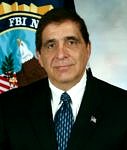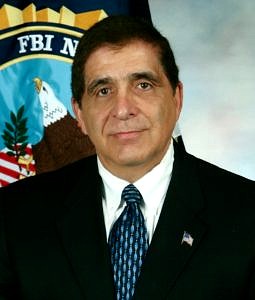“Café Conversations Revisited!” Contributed by Nick Zingo
 (Note – This blog post contribution was written by TBR Certified Trainer Nick Zingo): Awhile back I wrote a blog post regarding a very different group engagement technique titled “Café Conversations.” Here is recap with some new information for you to experiment with.
(Note – This blog post contribution was written by TBR Certified Trainer Nick Zingo): Awhile back I wrote a blog post regarding a very different group engagement technique titled “Café Conversations.” Here is recap with some new information for you to experiment with.
The idea for “Café Conversations” came from a chapter from one of Sharon’s books Training from the Back of the Room the chapter on “The World Café,” p. 259). This is a very effective and unique collaborative and engagement strategy that uses all six brain science principles:
1. Movement trumps sitting.
2. Talking trumps listening.
3. Images trumps words.
4. Writing trumps reading.
5. Shorter trumps longer.
6. Different trumps same.
Six in One: All 6 Trumps in One Learning Activity!
How does this work? Below is a brief description of how each brain-science principle is rolled into the Café Conversations activity:
#1: Learners rotate tables after a set number of minutes (movement trumps sitting).
#2: At each table, learners discuss the topic among themselves, answering specific questions (talking trumps listening).
#3 and #4: While at their tables, learners write their thoughts, responses, ideas, and even draw doodles on the chart paper that is taped to each table (images trumps words and writing trumps reading).
#5: The table rotations are fairly short time-wise, and sometimes you can shorten the time more after each table rotation as learners become accustomed to the rotation procedure (shorter trumps longer).
#6: This learning activity is very unique from other discussion-type strategies – I have yet to meet another college instructor who has used this technique (different trumps same).
A Little History of My Class:
Among my teaching responsibilities at two different California colleges, I facilitate a course of instruction in ethics three times a year for the Los Angeles Police Department (LAPD) Leadership Program. This is a course for department managers and supervisors, as well as law enforcement personnel from other agencies throughout California.
Ethics is part of the Leadership Program’s four-month long training curriculum. The classes are small, numbering no more than 20-24 learners per class. This allows me to arrange the learners into groups of 4-5 at each table. By the time the ethics section of the class is taught, learners have bonded with one another and have established a class culture. The ethics section occurs during the final week of the curriculum and is a 3-hour instructional block.
The Café Conversations activity takes place during the final 60-75 minutes of the ethics section, after learners have been engaged in various Accelerated Learning activities dealing with basic ethical theories and decision-making formulas. This establishes a foundation for the Café Conversations activity.
Introducing Café Conversations:
Before the Café Conversations activity begins, I printed various ethics “scenarios,” i.e. specific situations dealing with some segment of content from the ethics class. The scenarios were printed on large cards that were, in turn, on top of chart paper sheets taped to each table. There was a different scenario for each table and, at the conclusion of each scenario, I printed several questions to start the “conversation” at teach table. I put felt-tipped markers on the tables with which learners could write/draw on the chart papers.
I begin the actual activity with a 10-minute introduction in which I explain each of the table’s “scenarios,” that is, the topic/questions that will be discussed at each Café Conversation table. Each participant also has a paper with the scenarios and questions printed on it.
During the introductory 10 minutes, I also ask for volunteers to be Table Hosts (one per table). A Table Host stays at a specific table throughout the whole activity and verbally summarizes the “scenario” for each new rotation group. The Table Host also acts as the discussion facilitator for each rotation.
Finally, I check for understanding by asking the class a few “yes/no” questions about the Café Conversations procedure. Examples: “Can you rotate tables whenever you’re finished? (no). Is music the signal to rotate tables? (yes). Do Table Hosts rotate tables? (no). Can you write your own thoughts/summaries on the chart paper? (yes). Can someone in your table group write a summary for the group? (yes).”
Facilitating Café Conversations:
The first Café Conversations rotation lasts 10 minutes. After the first rotation, I reduce the time to 9 minutes for the next two rotations, then 8 minutes for the 4th rotation, and then 7 minutes for the final rotation. Music is the signal for them to finish their discussions and rotate tables.
During the entire activity, I visit each table group and sit, observe, and listen to each table group’s conversation for a few minutes. This is especially important for the very first rotation as there are usually questions regarding the activity. As I visit each table, I do NOT involve myself in their conversation because I want them to focus on THEIR thoughts and ideas about the scenario, not mine.
At the conclusion of Café Conversations, when all rotations have been completed, each table group verbally summarizes their scenario and presents the combined results (written on the table chart papers) to the entire class.
Lessons Learned:
1. It is really important that the Table Host (who is the only one who remains at each table throughout the entire activity) makes sure that each new group of learners continues where the prior group left off. So the Table Host does a quick review of the scenario and what was already discussed, and then continues the discussion from there.
2. Over time, I found that when groups rotated, it was not necessary for the “groups” to stay together. Now, I encourage the learners to rotate to a table of their choice, and NOT stay in their first group, as long as they have rotated to all tables by the time the learning activity concludes. This allows for different thoughts and ideas among the groups and guards against group think.
3. I use instructor evaluations to measure the success of Café Conversations. But more to the point, and what I consider a badge of honor, is that, when time is called for the next rotation, the learners continue discussing the scenario assigned to their table – this is a true measure of the success of their involvement in the activity!
For my first Café Conversations post from January 2016, click HERE. To send me questions you have about Café Conversations (or about what I do), feel free to email me at [email protected].
*****************************
About Nick Zingo :
:
Nick is a teacher-facilitator for California State University, Northridge, and Moorpark College, Ventura County, California, USA. Nick is absolutely passionate about teaching and is known for his “different” (and successful) teaching techniques. He’s often called upon by colleagues for ideas, and he emphasizes the importance of Accelerated Learning and engaging all learners. You can send Nick a message on LinkedIn or at [email protected].
*****************************
Click on the link below for the 2020 calendar of public “Training from the BACK of the Room” (TBR) Practitioner Classes and the Trainer Certification Course (TCC) dates for 2020:
